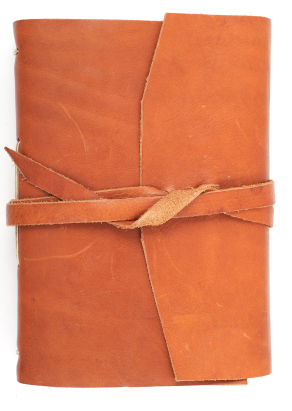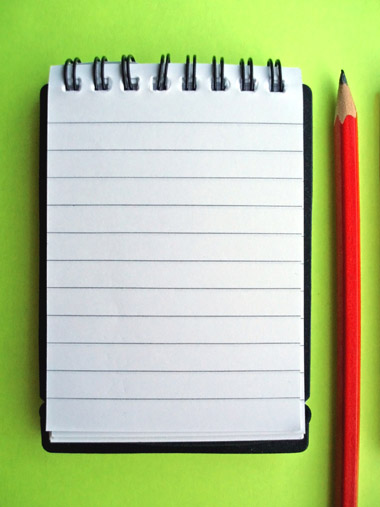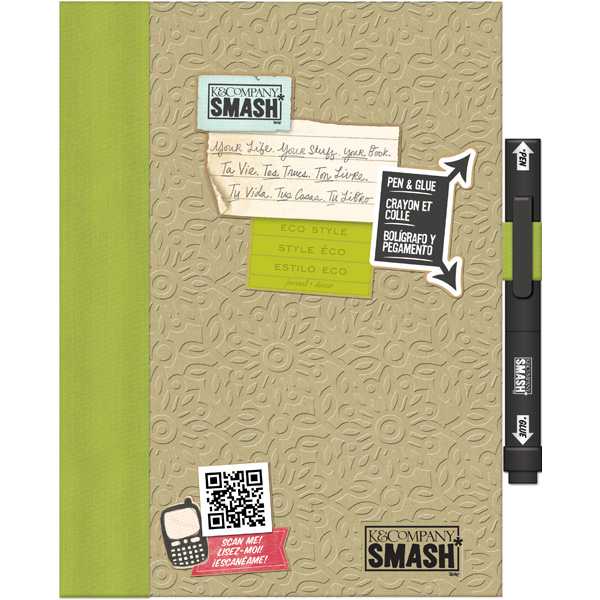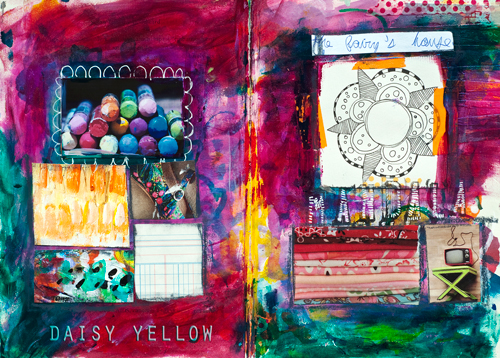 Experts tell us that as parents, we need to take time to nurture ourselves as well as our families.
Experts tell us that as parents, we need to take time to nurture ourselves as well as our families.
That sounds wonderful, but with all that we do, who has the time? When do we fit in meditation, yoga, or even a hot, uninterrupted bath?
But what if you discovered something that takes only 15 minutes a day, costs next to nothing, yet reaps enormous personal benefits? Studies prove that expressive writing, or “journaling,” improves both physical and mental health. All you need is paper, pen, and a short window every day.
Scientific studies show that people who write in journals report less anxiety, have decreased chronic pain, experience improved immune function, and even visit the doctor less often.
Dr. James W. Pennebaker, a pioneer in the study of expressive writing and its effects on health wrote, “People who engage in expressive writing report feeling happier and less negative than before writing. Similarly, reports of depressive symptoms, rumination, and general anxiety tend to drop in the weeks and months after writing about emotional upheavals.” (Writing To Heal.)
No one really knows exactly why journaling works. One theory is that putting feelings into words on a page helps the brain to better process emotions. Writing also helps to organize thoughts and bring order to a problem or situation. It’s sort of like talking through a problem with a friend, except that you don’t need to worry about what your journal thinks of what you are saying. The most benefit was found in people who wrote about traumatic or painful experiences, rather than everyday musings.
Morning pages
Don’t have any trauma to write about? You might not suffer from any major issues, but we all have stuff. Writing daily can de-clutter your brain. Most of us have long mental to-do lists and nagging worries running through our heads. This type of brain clutter can get in the way of our peace of mind.
In her landmark book, The Artist’s Way, Julia Cameron recommends a tool that she calls “morning pages.” This is simply writing three pages in a notebook, longhand, every morning. She says to write whatever comes into your mind, just keep your hand moving across the page. By keeping your hand in motion, writing becomes a form of meditation.
 Sarah Ban Breathnach recommends a similar journaling practice which she calls a “daily dialogue.” In her book, Simple Abundance, she compares her daily dialogue to having a conversation with herself on paper, or a “check in” with her authentic self.
Sarah Ban Breathnach recommends a similar journaling practice which she calls a “daily dialogue.” In her book, Simple Abundance, she compares her daily dialogue to having a conversation with herself on paper, or a “check in” with her authentic self.
“What I was doing was not so much recording the events of my life as much as eliminating the mental minutia that was depleting my creative energy and driving me crazy,” Ban Breathnach writes.
Whether you call it meditation, therapy, or de-cluttering, it’s easy to begin. Choose a medium that is not intimidating, such as a spiral or composition notebook. If you buy a pretty journal, you might feel obligated to write beautiful prose — which is not the point of this exercise.
Set aside 15 minutes each day for this practice. Write continuously for the entire time, and don’t worry about spelling, punctuation, or even if it’s legible. Don’t censor your thoughts or feelings — you can always shred the pages afterwards.
In fact, write as if you plan to destroy your pages. That way you will be less inhibited. You may choose to keep pages to look at later — or not — it’s completely up to you. Although Pennebaker allowed typing or talking into a tape recorder in his studies, Cameron believes that writing longhand is more effective, even if typing is faster.
“Writing by hand is like walking somewhere, instead of whizzing there in the car,” wrote Cameron in the book The Vein of Gold. “We notice landmarks.”
And remember, this isn’t English class! You don’t have to be especially creative or know how to diagram verbs to gain the benefits of journaling. If you don’t have anything in particular that is bothering you, just put the pen to paper and take down whatever comes into your head. Writing quickly and expressively can help to tap into your subconscious. After a few days, you might be surprised at what starts to pop up on your pages.
For more information check out: Dr. James W. Pennebaker; Julia Cameron's Morning Pages; The health benefits of journaling
A Journal for Everyone
Still not sure what to say? Try one of these nontraditional journals:
 List Journal: You can find these online and in bookstores. Each page contains a prompt to make a list. List things like your five greatest fears, or your five favorite smells. List Your Self by Ilene Segalove is one example.
List Journal: You can find these online and in bookstores. Each page contains a prompt to make a list. List things like your five greatest fears, or your five favorite smells. List Your Self by Ilene Segalove is one example.
Collage Journal: This requires no more than an artist’s sketchbook or notebook made of heavy paper, scissors, glue stick and a stack of magazines to cut up. Go back to your childhood as you cut and paste images that appeal to you. If you would like to purchase a journal made specifically for this purpose, try The Illustrated Discovery Journal by Sarah Ban Breathnach.
 Smash by K&Company: This fun journal contains prompts, pockets and a cool tool that is a pen on one end, and glue stick on the other. The pockets are great for storing clippings and other paraphernalia that you plan to use later. You could, for example, paste in a movie ticket stub, and then write about the movie you saw and how you enjoyed the outing. This brand also offers tons of fun accessories available for purchase.
Smash by K&Company: This fun journal contains prompts, pockets and a cool tool that is a pen on one end, and glue stick on the other. The pockets are great for storing clippings and other paraphernalia that you plan to use later. You could, for example, paste in a movie ticket stub, and then write about the movie you saw and how you enjoyed the outing. This brand also offers tons of fun accessories available for purchase.
 Art Journal: This one is pure play! You can make an art journal out of just about anything, but an artist’s sketchbook works well because the heavier paper can take paint. In an art journal you can doodle, paint, paste and even sew on the pages. Even the most non-artistic person can do a multimedia collage. Adding text is optional, you don’t have to write a thing! For a basic overview of art journaling check here.
Art Journal: This one is pure play! You can make an art journal out of just about anything, but an artist’s sketchbook works well because the heavier paper can take paint. In an art journal you can doodle, paint, paste and even sew on the pages. Even the most non-artistic person can do a multimedia collage. Adding text is optional, you don’t have to write a thing! For a basic overview of art journaling check here.
Q&A a Day Journal: There are many versions of these available online. Most have 365 pages, each containing a question. You answer the question by writing in the journal and leave space to repeat the exercise on the same date the next year. After a few years, this result in an interesting view of your growth over time.
Example: Q&A a Day Five Year Journal by Potter Style.
 Tiffany Doerr Guerzon is a freelance writer and stay-at-home mom of three school-age children. Her articles, essays and humor have been featured in Brain, Child, Chicken Soup for the Soul: Parenthood, the Christian Science Monitor and over forty regional parenting magazines across the US and Canada. Read more of her writing at TDGuerzon.com.
Tiffany Doerr Guerzon is a freelance writer and stay-at-home mom of three school-age children. Her articles, essays and humor have been featured in Brain, Child, Chicken Soup for the Soul: Parenthood, the Christian Science Monitor and over forty regional parenting magazines across the US and Canada. Read more of her writing at TDGuerzon.com.











